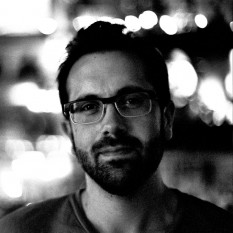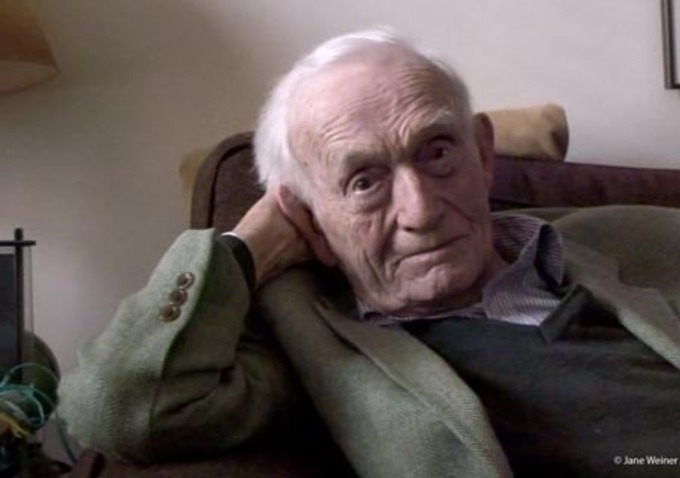By Matt Morris
We all love a success story. We’d hear more of them if we realigned our definition of success. For most emerging filmmakers, success will come from discovery. Movies need to be seen and certain practices limit that.
I don’t recall how I met Matt Morris. I believe it was through social media online. He thought I would like his short film, and he was right. He had a good sense on how to engage me without wasting my time or taking advantage of my availability. I have really enjoyed seeing how he has gotten his work done and seen. Today he shares some of what he’s learned with everyone; sharing seems to be in his DNA. If only that happened more…
In April 2008, my short documentary Pickin’ & Trimmin’ premiered at Aspen Shortsfest. It was my first festival. Before my first screening, I was lucky enough to meet someone representing a short film distribution company who expressed interest in my film. Over the next few years, I had multiple offers from various new distribution companies, but I opted instead to put my film online for free.
Many of the short filmmakers I met over the festival run of the film thought of a contract with a short film distributor as the end game. If you’ve made a film that will, most likely, never make its money back, the idea of making some money and the “cool factor” of being on iTunes was really appealing. But who was going to be doing the marketing for my film? Did I really have to sign away the rights to my film for years?
I kept waiting for a perfect offer that never came. Not only that, but after talking to dozens of filmmakers, I realized that no one was happy with their short film distributor. One friend of mine took this as a positive (if they’re all bad, then it doesn’t matter which one I pick!). At the end of the day, I just wanted my work to be seen by as many people as possible.

I met Casimir Nowzkowski when Pickin’ & Trimmin’ screened at the Woodstock Film Festival. His film Bodega was the only film in the doc shorts screening that was available to view online. I think we all thought that he was crazy for limiting his festival potential (the vast majority of film festivals won’t screen a film that is available online), and he thought we were crazy for limiting our audience to the festival circuit. Casimir viewed his strategy in simple terms- when he finished a film, he wanted it seen by as many people as possible as soon as possible. This has worked out very well for him, given his films have been watched millions of times on You-Tube. (Note: I’ve since caught up with Casimir and it appears we’ve both adjusted our strategies- he held off putting his new short doc “Andrew Sarris – Critic in Focus” online and as a result it premiered at the 2011 Telluride Film Festival. He still plans on making it available for free online viewing in a few months.)
Years had passed since I made Pickin’ & Trimmin’. It screened at dozens of festivals, aired on PBS affiliates around the country, OutsideTV, and earned a Midsouth Emmy nomination. The film achieved more success than I ever hoped it would, but at the end of the day it was just sitting there on my shelf. Maybe there was a bigger audience for the film. What about the bluegrass fans who might not attend a film festival? Not only that, but the subject of my film, The Barbershop in Drexel, NC, was in disrepair and I was trying to help raise money to fix it up. I needed to raise more awareness of The Barbershop for people to want to help save it. So, a few months ago, I decided to put the film online.
For me, Vimeo was the easy choice. Everything about it is filmmaker friendly. You have so much control over how your film is seen, and the community on the site is made up of other creative people who are more likely to have an interest in and share your film. I uploaded the film and blasted it out to all of my Facebook friends, as well shared the link with all the festivals I’d screened at, encouraging them to share on their Facebook pages. I’d made my big push.
In the first month, the film had 722 views.

Obviously, I was doing something wrong. At first, I tried to justify the underperformance- at 20 minutes, it’s the anti-viral video. But it kept nagging at me- I can do better. It was around then that I read this infinitely helpful blog post.
It reinforced what I’d read on Hope for Film before but not truly taken to heart- you have to treat the marketing and release of your film like it’s a full time job. In early December, I set aside a week to promote the film online. I sent out more than 150 emails. I embraced the Vimeo community, sought out Bluegrass blogs, video blogs, and anyone else who might enjoy the film.
So how is it working out?
As of this writing, the film has 77,564 views. It was chosen as a Vimeo Staff Pick, featured on Boing Boing, Esquire.com, Devour, The Art of Manliness, various Bluegrass blogs, and dozens of personal blogs. To put those numbers into perspective, more than ten times the amount of people watched the film online in a month than watched it over 3 years on the festival circuit. Considering I didn’t have to pay any submission fees and it’s revitalized DVD sales (where the profits are much higher than an iTunes sale) instead of cannibalized them, I’d say there’s a strong argument for all short filmmakers to put their film online for free and easy viewing and sharing.
If you’ve made a good film, the audience is there, but it’s your job to lead them to it. It’s important to have a plan. If you don’t have the time to implement it, find a friend who does. The only thing I’d add to the Short of The Week article on how to launch your film is to be willing to adapt your strategy based on who is embracing the film. At first I was focusing most of my energy on Bluegrass blogs. When looking at embeds, I noticed a handful of smaller men’s style blogs had featured the film. I adjusted my strategy, researching men’s style blogs with larger audiences and contacting them about the film. As a result, many of them featured Pickin’ & Trimmin’ and thousands of people saw the film who wouldn’t have otherwise.
Once your festival circuit is over, make your films available online. There are lots of people out there, like me, who love short films and want to watch and share your work.
The Vimeo Awards are currently accepting submissions and will be held in New York City in June.

Matt Morris is an award-winning director living in Winter Park, FL. His documentary short films Pickin’ & Trimmin’, Watermelon Man, and Mr. Happy Man have been staples of the film festival circuit over the last three years. He is currently filming Mark & Lorna, a documentary short film about a lounge singing couple, as well as planning a leap into narrative filmmaking. www.MattMorrisFilms.com
Twitter: @MattMorrisFilms



 Russell Sheaffer is an experimental film and documentary maker with a strong academic background. He received his Masters in Cinema Studies from NYU and his films have screened both nationally and internationally at venues such as the MoMA, UCLA, the University of Wisconsin at Madison, Torino GLBT Film Festival, Boston LGBT Film Festival, and the Anthology Film Archives.
Russell Sheaffer is an experimental film and documentary maker with a strong academic background. He received his Masters in Cinema Studies from NYU and his films have screened both nationally and internationally at venues such as the MoMA, UCLA, the University of Wisconsin at Madison, Torino GLBT Film Festival, Boston LGBT Film Festival, and the Anthology Film Archives.

